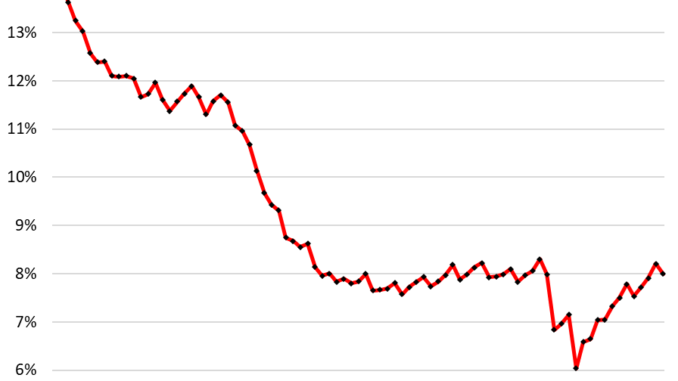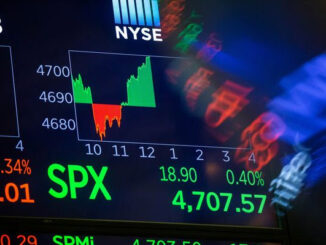
Higher for longer becomes formalized one meeting at a time, as projections for “longer-run” federal funds rate keep getting raised.
By Wolf Richter for WOLF STREET.
FOMC members voted unanimously today to maintain the Fed’s policy rates unchanged, as Fed governors have uniformly telegraphed in their speeches:
Federal funds rate target range: 5.25% – 5.5%.
Interest it pays the banks on reserves: 5.4%.
Interest it pays on overnight Reverse Repos (ON RRPs): 5.3%.
Interest it charges on overnight Repos: 5.5%.
Primary credit rate: 5.5% (banks’ costs to borrow at the “Discount Window”).
To douse Rate-Cut Mania, starting at the January meeting, the Fed had added new language to its statement. At today’s meeting, it repeated that language for the fourth time:
“In considering any adjustments to the target range for the federal funds rate, the Committee will carefully assess incoming data, the evolving outlook, and the balance of risks.”
“The Committee does not expect it will be appropriate to reduce the target range until it has gained greater confidence that inflation is moving sustainably toward 2 percent.”
And it repeated what it had said since the rate hikes started: “The Committee is strongly committed to returning inflation to its 2 percent objective” – with which the Fed whacks back at folks that are pushing it to raise its inflation target to 4% or whatever.
The FOMC statement maintained the new language on the labor market being in “better balance” that it had introduced in May:
“The Committee judges that the risks to achieving its employment and inflation goals have moved toward better balance over the past year.”
The “dot plot,” Oh MY! Rate Cuts dialed down to just 1 cut in 2024.
In its updated “Summary of Economic Projections” (SEP) today, which includes the infamous “dot plot,” each of the FOMC’s 19 participants jots down where they see various economic metrics – the Fed’s policy rates, unemployment rates, GDP growth, PCE inflation, etc. – by the end of 2024, by the end of 2025, etc. The median value of these projections (the value in the middle) becomes the headline projection for that metric. These median projections are not a decision by the Fed, nor a commitment. They’re a summary of how the 19 participants are seeing the economy evolve.
The median projection for the federal funds rate at the end of 2024 was 5.125%: only 1 rate cut of 25 basis points in 2024 — down from the three cuts envisioned since the December meeting — bringing the Fed’s target to a range between 5.0% and 5.25%.
Four of the 19 participants saw no rate cuts in 2024, seven saw 1 rate cut, and 8 saw 2 cuts. None (zero) of the 19 participants saw 3 cuts or more in 2024. This is a hawkish dial-down from the last dot plot in March, when 10 participants saw 3 or more cuts.
The mid-point has been 5.375% since the July 2023 meeting. Here is how the 19 participants saw the rate scenario for 2024:
4 see 5.375%: No cuts (up from 2 participants in March)7 see 5.125%: 1 cut (up from 2 participants in March)8 see 4.875%: 2 cuts (up from 5 in March)0 see 4.625%: 3 cuts (down from 9 in March)0 see 4.375%: 4 cuts (down from 1 in March).
Higher-for-longer: The median projection for the “longer-run” federal funds rate rose to 2.8% from 2.6% in the March SEP, slowly but steadily advancing with every meeting along the higher-for-longer theme.
GDP growth projections: The median projection for GDP growth for 2024 remained at 2.1% (from 2.1% in the March SEP, and from 1.4% in the December SEP).
Higher inflation projections: The median projection for “core PCE” inflation by the end of 2024 rose to 2.8% (from 2.6% in March and from 2.4% in December).
Unemployment rate projections: The median projection for the unemployment rate remained at 4.0% by the end of 2024.
QT continues at the slower pace announced in May, to avoid the kind of mess the Fed experienced with the repo market blowout in September 2019 after QT-1. “By going slower, you can get farther,” Powell had said at the press conference after the last meeting. The Fed has already shed over $1.7 trillion in assets since it started QT in July 2022. It will continue to shed assets but at a slower pace.
The slower pace of QT starts this month. The Treasury roll-off was reduced from $60 billion a month to $25 billion. On the other hand, the Fed removed the $35-billion cap from the MBS roll-off.
MBS come off the balance sheet via passthrough principal payments that result from mortgage payoffs, but mortgage payoffs have collapsed as refis have collapsed and homes sales have plunged, and these passthrough principal payments have become a trickle of around $17 billion a month. If the mortgage business ever picks up again so that more than $35 billion a month in MBS come off, these MBS will just come, and goodbye, but the excess over $35 billion will be replaced with Treasury securities.
Here is the whole statement:
Recent indicators suggest that economic activity has continued to expand at a solid pace. Job gains have remained strong, and the unemployment rate has remained low. Inflation has eased over the past year but remains elevated. In recent months, there has been modest further progress toward the Committee’s 2 percent inflation objective.
The Committee seeks to achieve maximum employment and inflation at the rate of 2 percent over the longer run. The Committee judges that the risks to achieving its employment and inflation goals have moved toward better balance over the past year. The economic outlook is uncertain, and the Committee remains highly attentive to inflation risks.
In support of its goals, the Committee decided to maintain the target range for the federal funds rate at 5-1/4 to 5-1/2 percent. In considering any adjustments to the target range for the federal funds rate, the Committee will carefully assess incoming data, the evolving outlook, and the balance of risks. The Committee does not expect it will be appropriate to reduce the target range until it has gained greater confidence that inflation is moving sustainably toward 2 percent. In addition, the Committee will continue reducing its holdings of Treasury securities and agency debt and agency mortgage‑backed securities. The Committee is strongly committed to returning inflation to its 2 percent objective.
In assessing the appropriate stance of monetary policy, the Committee will continue to monitor the implications of incoming information for the economic outlook. The Committee would be prepared to adjust the stance of monetary policy as appropriate if risks emerge that could impede the attainment of the Committee’s goals. The Committee’s assessments will take into account a wide range of information, including readings on labor market conditions, inflation pressures and inflation expectations, and financial and international developments.
Voting for the monetary policy action were Jerome H. Powell, Chair; John C. Williams, Vice Chair; Thomas I. Barkin; Michael S. Barr; Raphael W. Bostic; Michelle W. Bowman; Lisa D. Cook; Mary C. Daly; Philip N. Jefferson; Adriana D. Kugler; Loretta J. Mester; and Christopher J. Waller.
Take the Survey at https://survey.energynewsbeat.com/






